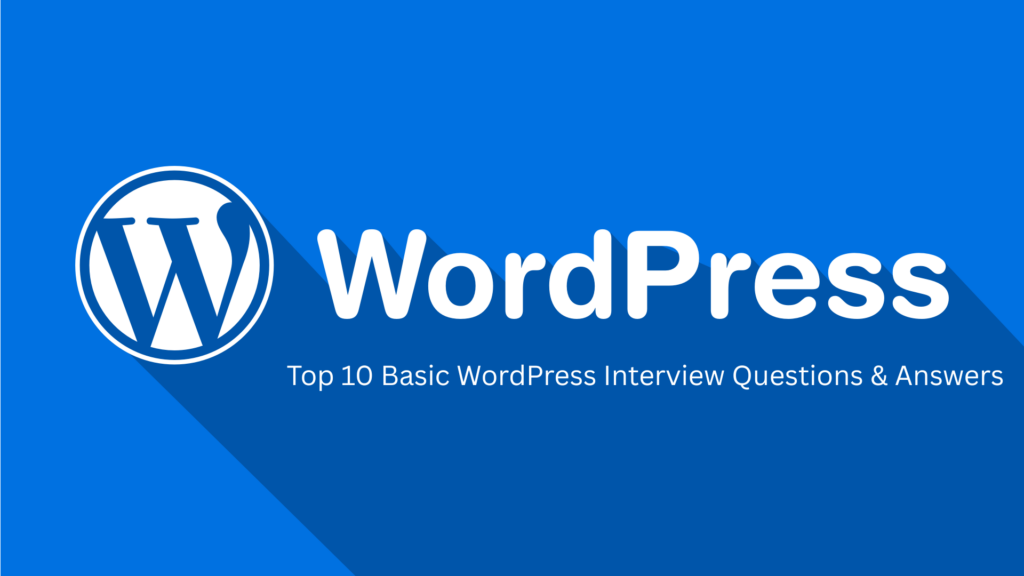
1. What is WordPress?
Answer: WordPress is an open-source content management system (CMS) used for building and managing websites. The platform needs PHP and MySQL in its backend. Common people can integrate some additional features for websites without the knowledge of coding. WordPress has most of its functionalities from themes and plugins.
2. What are the differences between Posts and Pages in WordPress?
Answer:
Posts are made to publish blog entries or articles. They have time stamps. These can be organized into categories and also tagged. Posts are in the reverse chronological order in the ordinary case.
Pages are meant for static content and are used for the “About Us,” “Contact,” and “Privacy Policy” pages. They don’t have a post date, nor is there any comparison with pages.
3. What is a WordPress Theme?
Answer: A WordPress theme is an arrangement of clearly labeled files that dictate the user experience and visual appearance of a WordPress site. Theme files include templates, CSS styles, and JavaScript files. Themes can be installed, activated, and customized from the WordPress admin panel.
4. What is a WordPress Plugin?
Answer: A WordPress plugin is a piece of software that offers a specific extension of features or functionality to a WordPress site. Plugins can be installed and activated straight from the WordPress dashboard, which enlarges the core WP functionality, e.g., SEO optimization, contact forms, social-sharing buttons, and more.
5. What are WordPress Widgets?
Answer: Widgets are small, self-contained blocks of text or even code that can be introduced into defined areas such as the sidebar, footer, and other widget-ready sections of a WordPress theme. Widgets can list items such as recent posts, search boxes, calendars, tags, etc.
6. What is the WordPress Dashboard?
Answer: The WordPress Dashboard is the home screen of your WordPress admin panel, where site owners and admin users can manage and configure their WordPress website. Depending on user access permissions, owners, editors, subscribers, for example, would have different activities, such as creating posts, pages, managing themes and plugins, working on site settings, and so on.
7. What is a permalink in WordPress?
Answer: The permalink is nothing but the web address that shows where the single post, page, or any other content can be located on the web today. The blog URL needs to be user behavior and search-engine optimization-friendly.
8. What is the difference between categories and tags in WordPress?
Answer:
Categories are the larger classifications or categories that organize contents within hierarchical structures. They can have subcategories and can help in the organization of content effectively.
Tags are much more flexible and free-form: they are keywords that are attached to each post to describe the main topics of your post. They therefore afford a marginally more fine-grained categorization, but hold no hierarchical relation like a category to subcategories.
9. What is the function of the wp-config.php file?
Answer: The wp-config.php is an essential WordPress file, where most of the basic settings are stored, such as the database connection details (name of your database, username, password), as well as site URL, security keys for security measures, and some other site settings.
10. How do you install a WordPress plugin?
Answer: To install a WordPress plugin:
- Go to the Dashboard > Plugins > Add New.
- Search for the plugin by name or browse the featured, popular, or recommended plugins.
- Click Install Now next to the desired plugin.
- After installation, click Activate to enable the plugin.
These questions are basic but essential for any beginner-level WordPress interview, covering the core concepts of using and managing a WordPress site.
LEAVE A COMMENT
Our Services
Discover our range of professional services designed to meet your needs. We provide expert solutions with precision and excellence to help you achieve your goals.


Comments (0)
No comments yet. Be the first to comment!